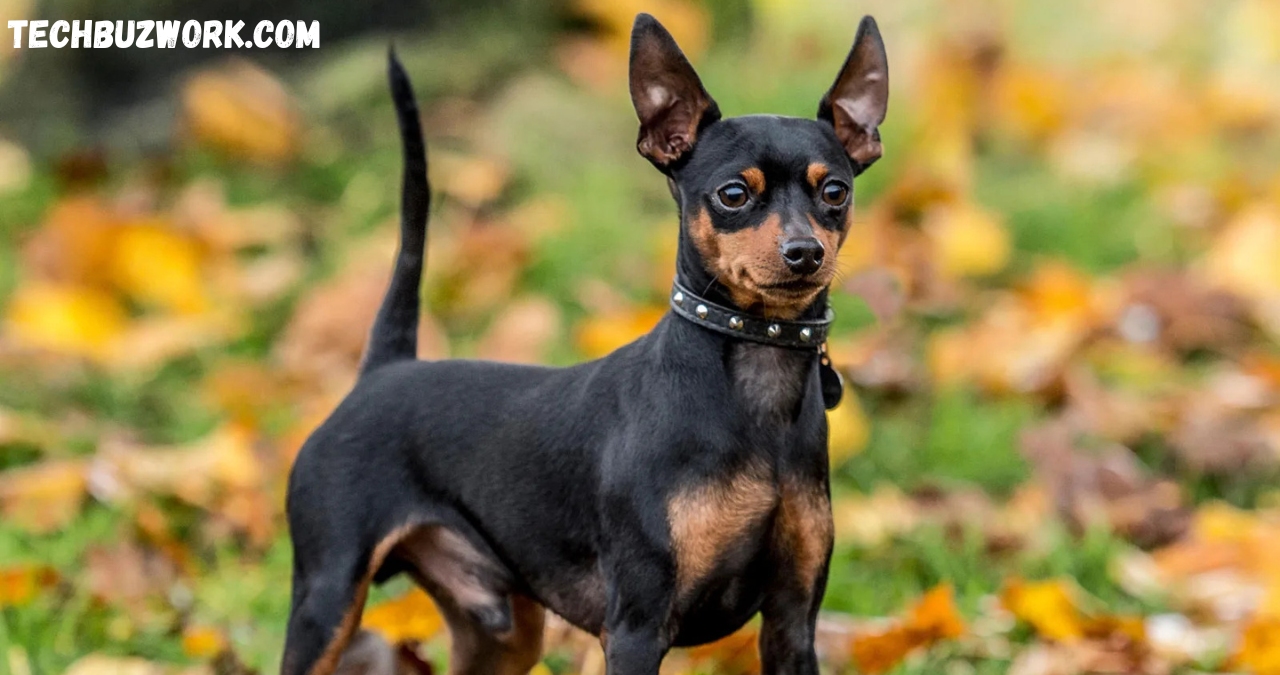Introduction
The Miniature Pinscher, affectionately known as the “Min Pin,” may be tiny in size, but it packs a powerhouse of personality. With its high-stepping gait, fearless demeanor, and sharp intelligence, this pint-sized breed has captured the hearts of dog enthusiasts around the world. Often mistaken for a miniature version of the Doberman Pinscher, the Min Pin is, in fact, an entirely distinct breed with a unique history and temperament. Don’t let its small frame fool you—this dog has a big attitude and an even bigger heart.
Whether you’re considering bringing one home or simply want to learn more about this energetic breed, this comprehensive guide will walk you through everything you need to know. From its origins and characteristics to training needs, health tips, and more, we’ll explore why the Min Pin is such a beloved companion. We’ll also dispel myths, share lifestyle advice, and offer insights into what it really means to live with this spirited breed.
If you’re looking for a small dog with a bold personality, the Miniature Pinscher might just be your perfect match. Let’s dive deep into the world of the Min Pin and discover what makes this dog breed truly one of a kind.
Origins and History of the Miniature Pinscher
The Miniature Pinscher is a breed with a deep-rooted European legacy, tracing back several centuries. Contrary to popular belief, Min Pins are not simply smaller versions of Dobermans. In fact, the breed predates the Doberman Pinscher by at least 200 years. Developed in Germany, the Min Pin’s ancestors include the Dachshund, the German Pinscher, and possibly the Italian Greyhound. Each contributed to the breed’s signature blend of sleek agility and tenacious spirit.
This canine’s history began in the countryside, where they served a vital role as ratters on farms. Their primary purpose was to control rodent populations, and their sharp instincts, quick reflexes, and boundless energy made them perfect for the job. Over time, their elegance and charismatic personality caught the attention of the European elite, and they transitioned from farm dogs to fashionable companions.
Evolution into a Distinct Breed
The Miniature Pinscher was officially recognized as a distinct breed in Germany in the early 1900s. By the time they made their way to the United States, the American Kennel Club (AKC) added them to the Toy Group in 1929. While often associated with the Doberman due to visual similarities, breed historians emphasize that the two breeds developed independently.
Min Pins earned the nickname “King of Toys” because of their confident, regal stance and dynamic energy. Today, they continue to embody a mix of ancient rat-hunting tenacity and modern-day sophistication. Their compact bodies, proud posture, and fearless outlook on life make them stand out in any crowd.
2Appearance, Temperament, and Personality Traits
Standing between 10 to 12.5 inches tall and weighing around 8 to 12 pounds, the Miniature Pinscher is a small dog with a big presence. Its sleek, short coat comes in colors like red, black and rust, or chocolate and rust, all of which highlight its athletic build. One of the breed’s most defining traits is its “hackney” gait—an elegant, high-stepping walk that gives it an aristocratic flair.
The Min Pin’s head is narrow with a slightly tapered muzzle, and its ears may be cropped or natural, standing erect to give it an alert expression. Its body is lean yet muscular, designed for speed and agility. Despite their delicate appearance, Min Pins are incredibly sturdy and thrive in active households where they can show off their agility.
Energetic and Fearless Nature
Min Pins are famous for their boldness. They exude confidence and often believe they’re the biggest dog in the room. This breed is fiercely independent, intelligent, and curious—traits that can both charm and challenge dog owners. They are often described as “big dogs in small bodies” because of their fearless approach to life.
This high-spirited temperament means Min Pins are always on alert, making them excellent watchdogs. However, their protective instincts and stubborn streak can lead to excessive barking or territorial behavior if not properly trained. They are incredibly loyal to their owners and can become deeply attached, making them fantastic companions for individuals or families who understand their unique personality.
Lifestyle Needs: Exercise, Training, and Socialization
Despite their toy-sized stature, Miniature Pinschers are bundles of energy that require ample physical and mental stimulation. A bored Min Pin can quickly become destructive or develop undesirable behaviors such as chewing, digging, or barking excessively. Daily walks, indoor games, and outdoor play sessions are essential to keep them happy and healthy.
These dogs love running and jumping, so secure spaces are a must—they’re known escape artists. Puzzle toys and agility courses can be great ways to engage their minds, while interactive fetch games tap into their natural hunting instincts. Meeting their exercise needs also strengthens the bond between pet and owner, making training and communication easier.
Training a Min Pin
Training a Min Pin requires patience, consistency, and a good sense of humor. These dogs are incredibly smart but also notoriously independent. They respond best to positive reinforcement techniques—think treats, praise, and plenty of encouragement. Harsh discipline can make them wary or stubborn, so gentle guidance is key.
Early training should focus on basic commands, leash manners, and housebreaking. Due to their high energy and tendency to become overexcited, teaching impulse control is essential. Crate training and socialization are also vital during puppyhood. Structured routines and firm, loving leadership will help shape your Min Pin into a well-adjusted companion.
Health, Nutrition, and Grooming
Miniature Pinschers are generally healthy and can live between 12 to 16 years with proper care. However, like all breeds, they are prone to certain hereditary conditions. Common issues include patellar luxation (dislocated kneecap), Legg-Calvé-Perthes disease (hip joint disorder), progressive retinal atrophy (PRA), and epilepsy.
Regular veterinary check-ups, vaccinations, and a proactive health regimen can catch potential problems early. Responsible breeding and early screening also play a vital role in ensuring a healthy puppy. Owners should be aware of any signs of discomfort, limping, or vision problems and seek medical attention promptly.
Feeding Your Min Pin
Nutrition is another cornerstone of your Min Pin’s health. A high-quality, protein-rich diet that matches their age, size, and activity level is essential. Min Pins can be prone to weight gain if overfed or under-exercised, so portion control and feeding schedules are important.
Avoid feeding table scraps or food with fillers, artificial additives, and excessive fats. Instead, opt for dry kibble or wet food recommended by veterinarians. Fresh water should always be available, and treats should be used sparingly, especially during training sessions.
Grooming and Maintenance
One of the great advantages of owning a Min Pin is their low-maintenance coat. Their short, sleek hair sheds minimally and requires only weekly brushing to remove loose hairs and keep the coat shiny. Regular baths (every month or two) with gentle dog shampoo help maintain cleanliness.
Nail trimming, ear cleaning, and dental hygiene are also part of a healthy grooming routine. Since they’re prone to dental issues, brushing their teeth several times a week—or using dental chews—can prevent tartar buildup and gum disease. Despite their ease of grooming, Min Pins are sensitive to cold and may need a sweater in cooler weather.
Choosing, Adopting, and Living with a Min Pin
When looking to add a Min Pin to your family, consider adoption first. Many breed-specific rescue groups and shelters have wonderful Min Pins in need of loving homes. If you choose to buy from a breeder, ensure they are reputable, transparent about health screenings, and committed to ethical practices.
Ask for health clearances and meet the puppy’s parents if possible. Avoid purchasing from pet stores or online ads where breeding standards may be questionable. Responsible acquisition helps promote animal welfare and gives you peace of mind.
Preparing Your Home
Min Pins are notorious for getting into mischief, so puppy-proofing your home is a must. Remove small objects, secure cabinets, and keep dangerous items out of reach. Baby gates, chew-proof toys, and a cozy bed will make your new furry friend feel welcome and safe.
Provide mental stimulation, early social experiences, and plenty of human interaction to ease the transition. A crate or safe space where your Min Pin can retreat is also helpful for managing behavior and building trust.
Real Life with a Min Pin
Living with a Min Pin means endless entertainment, energy, and personality. They thrive on attention and love to be involved in everything you do. However, they also require structure, training, and time to avoid behavioral issues.
These dogs are fiercely loyal, often bonding closely with one person. They can be wary of strangers, making socialization and exposure to new environments crucial. With the right approach, your Min Pin will become a delightful, spirited companion and a true member of the family.
Conclusion
The Miniature Pinscher is a dynamic, delightful breed that’s not for the faint of heart—but for the right owner, it’s pure joy. From its noble origins to its fiery personality, the Min Pin captivates with both elegance and boldness. With proper care, training, and love, this small dog will give back tenfold in loyalty, laughter, and liveliness. If you’re up for the challenge and charm, the Min Pin might just be the four-legged royalty your home deserves.
Frequently Asked Questions (FAQs)
Are Miniature Pinschers good for first-time dog owners?
They can be, but they require confident, consistent training and lots of attention.
How much exercise does a Min Pin need daily?
At least 30–60 minutes of activity, including walks and play.
Do Min Pins bark a lot?
Yes, they are vocal and alert, making them effective watchdogs.
What’s the average lifespan of a Miniature Pinscher?
Typically between 12 to 16 years.
Can Miniature Pinschers live in apartments?
Yes, with sufficient exercise and mental stimulation.
You May Also Read: https://techbuzwork.com/

